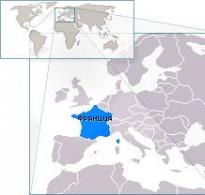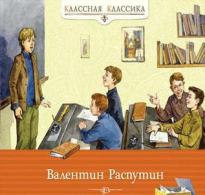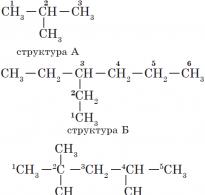Glass tears. An interesting property of Prince Rupert's drop (video). Rupert's drops come from ...
Prince Rupert's blob looks like a glass tadpole created by a novice glassblower, but it's so tough it can't be broken even with a hammer. However, it is enough to lightly hit her on the "tail", and she crumbles into powder. Scientists have been trying to find the reason for such inexplicable qualities for almost 400 years, and now a team of researchers from the University of Cambridge and Tallinn University of Technology in Estonia finally has an answer.
Prince Rupert's Batavian tears or drops first appeared in the 17th century and became famous when Prince Rupert of Bavaria presented five of these trifles to King Charles II of England. They were submitted to the Royal Society for study in 1661, however, despite almost four centuries of research, an explanation for their strange qualities has only now been found. The drops are made from molten glass with a high coefficient of thermal expansion and are dipped into a vessel of cold water. Molten glass solidifies instantly in the characteristic drop shape.

To study the drops of Prince Rupert, the scientists used a technique where a transparent 3D object is placed in an immersion bath so that polarized light passes through it. Changes in the polarization of light within an object correspond to voltage lines. The previous work of the Tallinn and Cambridge physicists, carried out back in 1994, included filming the explosion of a droplet at a speed of almost a million frames per second. In the video, you can see how after the damage to the "tail", cracks propagate drop by drop at a speed of about 6,500 kilometers per hour.

A new study has shown that the compressive stresses of glass in the "head" of the drop are about 50 tons per square inch, which makes it as strong as steel. This happens because the outside of the drop cools faster than the inside. Thus, a huge pressure is applied to the center of the “head” of the drop, which is compensated by stretching.
As long as these forces remain in balance, the drop is very strong and can withstand significant loads. But if the “tail” is damaged, this balance is disturbed, and many small cracks propagate parallel to its axis. It happens at such a high speed that it resembles an explosion.
Let us conditionally single out the outer layer and the inner core in the drop. The droplet is cooled from the surface, and its outer layer shrinks and decreases in volume while the core remains liquid and hot.
After the temperature inside the ball drops, the core will also begin to shrink. But the already hard outer layer will resist the process. With the help of intermolecular forces of attraction, he tenaciously holds the nucleus, which, having cooled down, is forced to occupy a larger volume than if it had cooled freely.
As a result, forces arise at the boundary between the outer layer and the core, pulling the outer layer inward, creating compressive stresses in it, and the inner core outward, creating tensile stresses in it.
These stresses are very high during too rapid cooling. So the inner part of the balloon can break away from the outer part, and then a bubble forms in the droplet.
Very high residual stress results in unusual qualities, such as the ability to withstand a hammer blow on the head of a Prince Rupert drop without breaking its integrity.

But if the tail is slightly damaged, then the drop is destroyed at great speed. The destruction occurs at a speed of 1658 meters per second, which is approximately 5968.8 kilometers per hour.

), or "Danish tears". The drop head is incredibly strong, it is very difficult to mechanically damage it by compression: even strong hammer blows or a hydraulic press do no harm to it. But it is worth slightly breaking the fragile tail, and the whole drop will shatter into small fragments in the blink of an eye.
This curious property of a glass drop was first discovered in the 17th century, either in Denmark, or in Holland (hence another name for them - Batavian tears), or in Germany (sources are contradictory), and an unusual little thing quickly spread throughout Europe as a funny toy . The drop got its name in honor of the commander-in-chief of the English royal cavalry, Rupert of the Palatinate, popularly known as Prince Rupert. In 1660, Rupert of the Palatinate returned to England after a long exile and brought with him unusual glass drops, which he presented to Charles II, who transferred them to the Royal Society of London for research.
The technology for making the drop was kept secret for a long time, but in the end it turned out to be very simple: just drop molten glass into a bucket of cold water. In this simple technology lies the secret of the strength and weakness of the drop. The outer layer of glass solidifies quickly, decreases in volume and begins to put pressure on the still liquid core. When the inner part also cools, the core begins to shrink, but this is now counteracted by the already frozen outer layer. With the help of intermolecular forces of attraction, it holds the cooled core, which is now forced to occupy a larger volume than if it had cooled freely. As a result, opposing forces arise at the boundary between the outer and inner layers, which pull the outer layer inward, and a compressive stress is formed in it, and the inner core outward, forming a tensile stress. In this case, the inner part can even break away from the outer, and then a bubble forms in the drop. This opposition makes the drop stronger than steel. But if, nevertheless, its surface is damaged by breaking the outer layer, the hidden force of tension will be released, and a rapid wave of destruction will sweep from the place of damage along the entire drop. The speed of this wave is 1.5 km/s, which is five times faster than the speed of sound in the Earth's atmosphere.

The same principle underlies the manufacture of tempered glass, which is used, for example, in vehicles. In addition to increased strength, such glass has a serious safety advantage: when damaged, it breaks into many small pieces with blunt edges. Ordinary “raw” glass shatters into large sharp fragments that can seriously injure you. Tempered glass in the automotive industry is used for side and rear windows. The windshield for cars is made multi-layered (triplex): two or more layers are glued together with a polymer film, which, upon impact, holds the fragments and prevents them from flying apart.
Veronika Samotskaya
Batavian tears or Bologna flasks, as well as drops of Prince Rupert, are hardened drops of tempered glass with extremely durable properties. They were brought to England by Prince Rupert of the Palatinate in the middle of the 17th century. At the same time, they attracted the close attention of scientists.
17095 1 4 18
Most likely, such glass drops were known to glassblowers from time immemorial, but they attracted the attention of scientists rather late: somewhere in the middle of the 17th century. They appeared in Europe (according to various sources, in Holland, Denmark or Germany). The technology for making "tears" was kept secret, but it turned out to be very simple.

If you drop molten glass into cold water, you get a tadpole-shaped drop with a long, curved tail. At the same time, the drop has exceptional strength: its “head” can be hit with a hammer, and it will not break. But if you break the tail, the drop instantly shatters into small fragments.

The frames recorded using high-speed photography show that the “explosion” front moves drop by drop at a high speed: 1.2 km/s, which is almost 4 times higher than the speed of sound.
As a result of rapid cooling, the glass drop experiences strong internal stresses, which causes such strange properties. The outer layer of the drop cools so quickly that the glass structure does not have time to rebuild. The core is stretched, and the outer layer is compressed. Similarly, tempered glass is obtained - however, it does not have that tail, for which it is possible to break the shell so easily.





